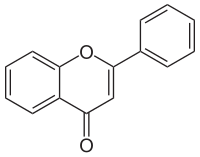
Differential expression of gibberellin- and abscisic acid-related genes implies their roles in the bud activity-dormancy transition of tea plants
Sign Up to like & getrecommendations! Published in 2017 at "Plant Cell Reports"
DOI: 10.1007/s00299-017-2238-5
Abstract: Key messageThirty genes involved in GA and ABA metabolism and signalling were identified, and the expression profiles indicated that they play crucial roles in the bud activity-dormancy transition in tea plants.AbstractGibberellin (GA) and abscisic acid… read more here.
Keywords: activity dormancy; transition; dormancy; expression ... See more keywords

Roles of specialized metabolites in biological function and environmental adaptability of tea plant (Camellia sinensis) as a metabolite studying model
Sign Up to like & getrecommendations! Published in 2020 at "Journal of Advanced Research"
DOI: 10.1016/j.jare.2020.11.004
Abstract: Abstract Background Tea is the second most popular beverage globally after water and contains abundant specialized metabolites. These metabolites give tea unique quality and are beneficial to human health. Some secondary metabolites are produced to… read more here.
Keywords: specialized metabolites; plant; adaptability tea; environmental adaptability ... See more keywords

Elucidation of the Regular Emission Mechanism of Volatile β-Ocimene with Anti-insect Function from Tea Plants (Camellia sinensis) Exposed to Herbivore Attack.
Sign Up to like & getrecommendations! Published in 2021 at "Journal of agricultural and food chemistry"
DOI: 10.1021/acs.jafc.1c03534
Abstract: Herbivore-induced plant volatiles (HIPVs) play an important role in insect resistance. As a common HIPV in tea plants (Camellia sinensis), β-ocimene has shown anti-insect function in other plants. However, whether β-ocimene in tea plants also… read more here.
Keywords: ocimene; plants camellia; tea plants; tea ... See more keywords

Herbivore-Induced (Z)-3-Hexen-1-ol is an Airborne Signal That Promotes Direct and Indirect Defenses in Tea (Camellia sinensis) under Light.
Sign Up to like & getrecommendations! Published in 2021 at "Journal of agricultural and food chemistry"
DOI: 10.1021/acs.jafc.1c04290
Abstract: Tea (Camellia sinensis) is the most popular nonalcoholic beverage worldwide. During cultivation, tea plants are susceptible to herbivores and pathogens, which can seriously affect tea yield and quality. A previous report showed that (Z)-3-hexenol is… read more here.
Keywords: herbivore induced; tea camellia; tea; tea plants ... See more keywords

Identification and Functional Analysis of Two Alcohol Dehydrogenase Genes Involved in Catalyzing the Reduction of (Z)-3-Hexenal into (Z)-3-Hexenol in Tea Plants (Camellia sinensis).
Sign Up to like & getrecommendations! Published in 2022 at "Journal of agricultural and food chemistry"
DOI: 10.1021/acs.jafc.1c06984
Abstract: Alcohol dehydrogenase (ADH) is a vital enzyme in the biosynthesis pathway of six-carbon volatiles in plants. However, little is known about its functions in tea plants. Here, we identified two ADH genes (CsADH1 and CsADH2).… read more here.
Keywords: reduction hexenal; hexenal hexenol; csadh1 csadh2; csadh2 ... See more keywords

Two UDP-Glycosyltransferases Catalyze the Biosynthesis of Bitter Flavonoid 7-O-Neohesperidoside through Sequential Glycosylation in Tea Plants.
Sign Up to like & getrecommendations! Published in 2022 at "Journal of agricultural and food chemistry"
DOI: 10.1021/acs.jafc.1c07342
Abstract: Flavonoid glycosides are typical bitter and astringent tasting compounds that contribute to the taste of tea beverages. However, the genes that contribute to the biosynthesis of bitter compounds (e.g., flavanone 7-O-neohesperidoside) in tea plants have… read more here.
Keywords: bitter flavonoid; tea; biosynthesis bitter; tea plants ... See more keywords

Characterization of Cuticular Wax in Tea Plant and Its Modification in Response to Low Temperature.
Sign Up to like & getrecommendations! Published in 2022 at "Journal of agricultural and food chemistry"
DOI: 10.1021/acs.jafc.2c05470
Abstract: Cuticular wax ubiquitously covers the outer layer of plants and protects them against various abiotic and biotic stresses. Nevertheless, the characteristics of cuticular wax and its role in cold resistance in tea plants remain unclear.… read more here.
Keywords: wax tea; wax; cuticular wax; characterization cuticular ... See more keywords

A Novel F3' 5' H Allele with 14 bp Deletion Is Associated with High Catechin Index Trait of Wild Tea Plants and Has Potential Use in Enhancing Tea Quality.
Sign Up to like & getrecommendations! Published in 2018 at "Journal of agricultural and food chemistry"
DOI: 10.1021/acs.jafc.8b04504
Abstract: Catechins are important chemical components determining the quality of tea. The catechin index (CI, ratio of dihydroxylated catechin (DIC)/trihydroxylated catechin (TRIC)) in the green leaf has a major influence on the amounts of theaflavins in… read more here.
Keywords: quality; novel allele; deletion; tea plants ... See more keywords

Chromatin accessibility and translational landscapes of tea plants under chilling stress
Sign Up to like & getrecommendations! Published in 2021 at "Horticulture Research"
DOI: 10.1038/s41438-021-00529-8
Abstract: Plants have evolved regulatory mechanisms at multiple levels to regulate gene expression in order to improve their cold adaptability. However, limited information is available regarding the stress response at the chromatin and translational levels. Here,… read more here.
Keywords: chilling stress; stress; translation; tea plants ... See more keywords

Identification and evaluation of reliable reference genes for quantitative real-time PCR analysis in tea plants under differential biotic stresses
Sign Up to like & getrecommendations! Published in 2020 at "Scientific Reports"
DOI: 10.1038/s41598-020-59168-z
Abstract: The selection of reliable reference genes (RGs) for normalization under given experimental conditions is necessary to develop an accurate qRT-PCR assay. To the best of our knowledge, only a small number of RGs have been… read more here.
Keywords: time; identified best; best combination; tea plants ... See more keywords

Theanine metabolism and transport in tea plants (Camellia sinensis L.): advances and perspectives
Sign Up to like & getrecommendations! Published in 2022 at "Critical Reviews in Biotechnology"
DOI: 10.1080/07388551.2022.2036692
Abstract: Abstract Theanine, a tea plant-specific non-proteinogenic amino acid, is the most abundant free amino acid in tea leaves. It is also one of the most important quality components of tea because it endows the “umami”… read more here.
Keywords: theanine metabolism; metabolism transport; tea; tea plants ... See more keywords